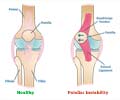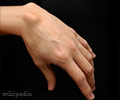An Indian-origin scientist has found that people with smaller anterior cruciate ligament (ACL) are more vulnerable knee injuries.
Knee injuries seem to be common in people with smaller anterior cruciate ligament (ACL), research conducted by an Indian-origin scientist has found.
Ajit Chaudhari, an assistant professor of Orthopedics at Ohio State University, found in a study that ACLs among people with previous injuries were, on average, about 10 percent smaller than were ACLs among those without an injury.During the study, Chaudhari's research team calculated the total volume of the ligaments based on magnetic resonance images of human knees.
In those with previous injuries, the uninjured ACL in the opposite knee was measured for the study.
Their ligaments were compared to the ACLs in uninjured people of similar height and weight.
Those who had torn their ACLs had experienced noncontact injuries, meaning the injury occurred during some sort of movement of the body rather than because of a blow to the knee.
Chaudhari said that knowing that the knee's anatomy can influence susceptibility should help researchers who are trying to figure out why ACL injuries occur and who is most likely to experience these injuries.
Advertisement
Of the 27 injured participants, 16 had smaller ACLs than their matched controls.
Advertisement
However, researchers caution it does not mean that a smaller ACL will necessarily result in injury.
Instead, the research offers more clues about the variety of factors - such as activity level, neuromuscular coordination, gender and muscle strength - that appear to be contributors to ACL injury.
The study has been published in the American Journal of Sports Medicine.
Source-ANI
TAN








